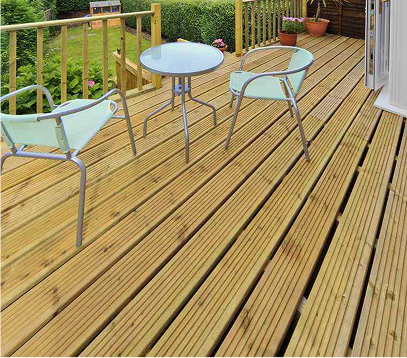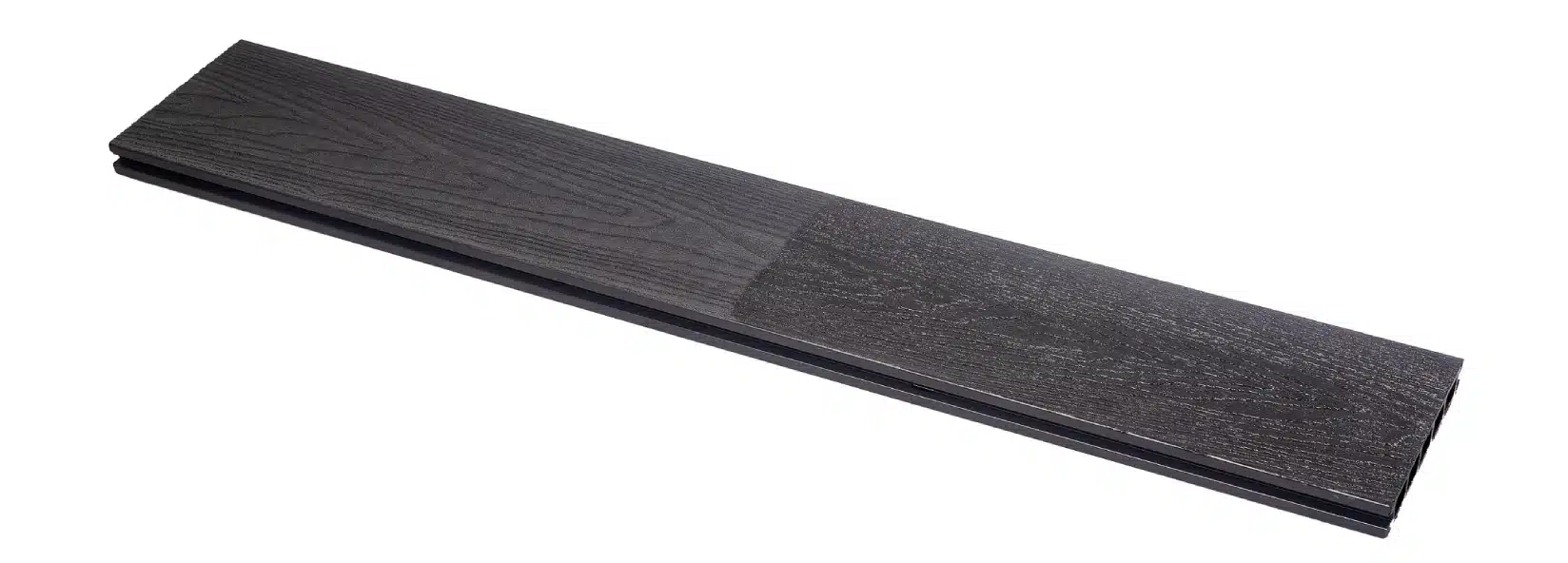
How to Choose Composite Decking Colour
If you own a wooden deck, you know that regular cleaning and treatment are essential to protect it from the UK’s harsh weather conditions. Unlike composite decking, wood is not naturally resistant to the elements, and a consistent maintenance routine is the only way to extend its service life and prevent costly damage.
This guide provides a complete overview of wood deck care. We’ll cover the routine cleaning needed to prevent damage and the annual treatments required to protect the timber itself.
These are the simple, preventative tasks you should perform regularly to stop problems before they start.
When dust, dirt, and leaves accumulate on your decking, they trap moisture and can reduce the deck’s aesthetic appeal. To maintain its appearance, remove all furniture and sweep the surface thoroughly on a regular basis. A quick rinse with a garden hose and lukewarm soapy water can also help remove all traces of dirt.
Do not allow leaves to accumulate on your deck, especially wet leaves. A build-up of leaves prevents air from moving freely, letting moisture accumulate and creating the perfect conditions for mould and algae to start growing.
Food stains, grease stains, and bird droppings can permanently distort the appearance of your decking if left untreated. It is best to clean these stains immediately when you notice them. Use a mild cleaner like hot, soapy water. Avoid using chlorine bleach, which can damage the wood.
Wood decking is highly susceptible to mould and algae. To remove it, you can use a dedicated mould remover or a homemade solution. A mixture of vinegar and baking soda applied to the area for about 30 minutes can be scrubbed away with a soft bristle brush and then rinsed fully with warm water.
During winter, ice can pile up on decking. To protect your deck, clear away all ice from its surface.
Expert Tip: Do not use rock salt on your wood decking as it can cause significant damage. A magnesium chloride-based ice melt is generally considered the safest and most effective option for wood.


Beyond routine cleaning, your wooden deck requires a protective coating to be applied annually (or bi-annually) to shield it from moisture and UV damage. Here are the main options.
Deck sealers are transparent coatings that create a protective layer on the decking surface, preventing water from being absorbed into the wood. This is your primary defence against wood rot and fungal growth.
Stains are pigment-based products that not only protect the wood but also change its colour. Many stains contain UV protection to prevent the sun from fading the wood to a dull grey. They are available in both oil-based and water-based formulas.
Oils are transparent treatments that penetrate deeper into the wood than stains or sealers. They protect the wood from water damage from within and help to restore natural oils lost from weathering, which prevents cracking and warping.
Painting your decking provides the strongest barrier against moisture and can enhance the appearance of an older deck.

The application process for stains, oils, and paints is similar and requires careful preparation.
First, clear all items from the surface, hammer down any raised nails or screws, and make any necessary repairs. Once the deck is ready, clean it thoroughly with a deck cleaner and a bristle brush, then rinse and allow it to dry completely.
Next, use a sander to remove all existing, failing coatings. Start with a medium-grit paper before switching to a fine-grit for a smooth finish. For hard-to-reach areas, use a hand paint scraper. Always sand carefully in the direction of the wood grain to avoid creating patches. When finished, remove all sanding dust with a hose or leaf blower and let the deck dry again.
Finally, apply the new treatment. Use a high-quality paintbrush, roller, or sprayer to apply the first coat of your chosen stain, oil, or paint evenly. Allow this to dry completely before applying a second coat, as per the manufacturer’s instructions.

While correctly treating your wood deck will certainly help prolong its life, many homeowners find that the time, effort, and recurring cost of this yearly maintenance becomes a significant chore.
If you’re looking for a “fit and forget” solution that offers decades of performance with just a simple soap-and-water wash, it might be time to consider the long-term value of composite decking. It’s designed specifically to eliminate the need for sanding, staining, and sealing.

How to Choose Composite Decking Colour